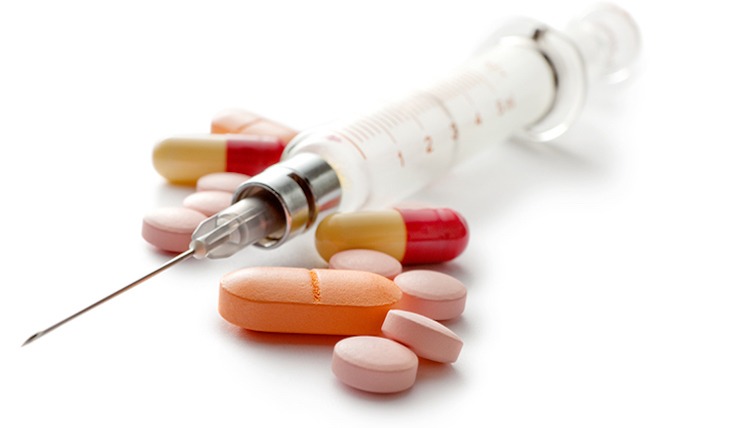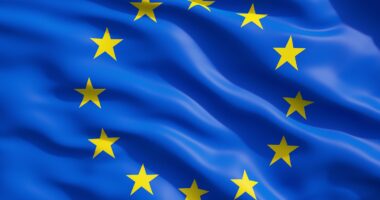Strong Growth for the Oncology-Drug Market
Fresh from the annual meeting of the American Society of Clinical Oncology in Chicago where pharmaceutical companies highlighted their pipelines and products, what is the outlook for the cancer-drug market, the largest therapeutic area in the global pharmaceutical industry? DCAT Value Chain Insights takes an inside look.
The global oncology-drug market reached $133 billion in 2017. Spending on cancer drugs in the US has doubled since 2012 with the lion’s share of that growth tied to drugs launched within the past five years, according to a recent analysis by the IQVIA Institute for Human Data Science. In all, 14 new cancer therapeutics were launched in the US in 2017. So which new drugs are making the mark, and what are the key market trends?
Inside the oncology drug market
Global spending on cancer therapies and supportive-care products rose to $133 billion globally in 2017, up from $96 billion in 2013, according to the IQVIA report, Global Oncology Trends 2018: Innovation, Expansion and Disruption. Supportive care spending was almost unchanged over five years, dropping $100 million from $23.7 billion in 2013 to $23.6 billion in 2017, according to the IQVIA study. This now represents 18% of spending globally in 2017, down from 25% in 2013. Overall, spending on cancer medicines continued to be focused in the major developed markets, with the US, EU5 (France, Germany, Italy, Spain, and the UK), and Japan accounting for 74% of spending in 2017, up from 72% in 2013.
Growth rates for therapeutics—measured in constant dollars—slowed globally and across most regions in 2017 although they remained in double digits at 12.5% globally and 12.1% in the US, down from 14.8% and 17.4%, respectively, in 2016. The major factor slowing growth in the US in 2017 was a drop in growth from new medicines following a low number of approvals in 2016, while in other markets, uptake of medicines and increased use of existing brands drove growth in 2017.
Spending on cancer drugs in the US has doubled since 2012 and reached almost $50 billion in 2017, with the lion’s share of that growth tied to drugs launched within the past five years. US spending on oncology medicines accounts for approximately 46% of global spending. Outside the US, oncology drug costs exceeded $60 billion in 2017 driven by new product launches and increased use of existing brands. Table I highlights major measures in the oncology-drug market.
| Table I: Global Oncology Drug Market at a Glance |
| Market measure |
| Global oncology drug market in 2017: $133 billion |
| Percentage of oncology drug spending in developed markets (US, EU5, and Japan) in 2017: 74% |
| Number of new active substances for cancer therapies launched in the US in 2017: 14 |
| Number of drugs in late-stage development in the industry’s oncology drug pipeline: 710 |
| Small molecules in late-stage development in industry’s oncology drug pipeline: 335 molecules or 47% of the pipeline |
| Biologics in late-stage development in industry’s oncology drug pipeline: 301 biologics or 45% of the pipeline |
Source: IQVIA Institute for Human Data Science, Global Oncology Trends 2018: Innovation, Expansion and Disruption (May 2018) .
Spending on cancer medicines is heavily concentrated among the top 35 drugs, which account for 80% of total spending, according to the IQVIA report. Over half of cancer drugs have less than $90 million in annual sales. Those products with less than $90 million in sales account, in aggregate, for only 2% of oncology spending as they are often older and available as generics at lower costs.
List prices of new cancer drugs at launch have risen steadily over the past decade, and in the US, the median annual cost of a cancer drug launched in 2017 exceeded $150,000, compared to $75,000 for new cancer treatments launched 10 years ago. Most cancer drugs, including those with high annual cost, are used by relatively few patients, according to the IQVIA study. An estimated 87% of oncology drugs were used by fewer than 10,000 patients last year. Newer medicines launched within the past five years account for 30% of all oncology drug spending across developed markets while more than half of spending across pharmerging (term defined by IQVIA as low-income countries with high pharmaceutical growth) is for drugs that were first launched more than 20 years ago. Overall, of cancer medicines in use around the world, 80% generated less than $1 billion per year for the companies that produce them, and 72% less than $500 million.
New product launches
In 2017, 14 new cancer therapeutics were launched in the US (see Table II at end of article). All of them were targeted therapies, meaning therapies that block the growth progression and spread of cancer by interfering with specific molecular targets. Eleven received breakthrough therapy status from the US Food and Drug and Administration, a designation granted to drugs that demonstrate substantial improvement over existing therapies on one or more clinically significant endpoints. The IQVIA report points out that the new medicines launched in 2017 represented significant clinical advances and contributed to patients’ overall survival across a range of tumors and mechanisms.
In 2017, there were five immuno-oncology new active substances (see Table II at end of article) and all received breakthrough therapy designations. Increasingly, new cancer medicines are for smaller patient populations, with 10 out of 14 therapies targeting orphan indications. Eight of the new therapies were oral rather than infused or injected. The remaining six therapies were biologics, including two novel cell-based therapies: axicabtagene ciloleucel and tisagenlecleucel. These two therapies were the first chimeric antigen receptor (CAR) T-cell immunotherapies available in the US. Overall, since 2012, there have been 78 indication approvals for 63 new active substances relating to 24 different tumor types, according to the IQVIA study. Lymphoma, leukemia and lung cancers have gained the most new therapies since 2013.
Inside the industry’s oncology drug pipeline
On a pipeline basis, the industry’s pipeline reached an historic level of 710 molecules in late-stage development in 2017, up more than 60% from a decade ago, and with almost 90% of the therapies being targeted treatments, according to the IQVIA report. Of the 710 molecules in late-stage development, 335, or 47% are small molecules, and 301, or 45% are biologics. The remaining types are: cytotoxics (54 molecules, or 8% of the industry’s pipeline); hormonals (17 molecules, or 2% of the pipeline); and radiotherapies (3 molecules, or 0.4% of the pipeline).
The pipeline of immunotherapies is particularly active and includes nearly 300 molecules. Although the identified late-stage pipeline contains only four mechanisms for immuno-oncology, the early stage pipeline (Phase I or Phase II) contains 60 mechanisms. These drugs are being tested against 27 different tumor types, indicating the broad-based application of this new approach to cancer treatment, according to the IQVIA report. From 2013 to 2017, there have been 15 breakthrough oncology therapies that have yet to launch, although 18 therapies were designated with fast-track status in 2017.
On a company basis, almost 700 companies or organizations have one or more oncology drugs in late-stage development, and 14 of the world’s largest pharmaceutical companies have at least one-third of their late-stage R&D activity focused on oncology. The group of large companies with total corporate sales above $10 billion average just under 40% of their pipeline in oncology. Companies with the greatest focus in oncology have, on average, 18 molecules in late-stage development, with an average of two indications for each drug. Of the 455 smaller companies with more than 90% of their pipeline in oncology, they are involved in 1,692 product-indications, which represents 43% of the overall cancer-drug pipeline.
Looking ahead
The global market for oncology therapeutic medicines is projected to reach $200 billion by 2022, averaging 10% to 13% growth during that time while the US market is expected to reach $100 billion with an average growth rate of 12% to 15% for the same period, according to the IQVIA report. Spending on cancer drugs in the US is expected to double by 2022, exceeding the nearly $50 billion in spending in 2017, according to the IQVIA report
Advances in technology and the use of information will act as driving forces that will impact oncology treatment and costs over the next decade, according to the IQVIA study. This would include advances in drugs and medical devices as well as real-world data, artificial intelligence, and mobile apps to drive better patient engagement. The report points out these advances will have some multiplicative effects that begin to reshape prognoses for patients, the way care is delivered, and how much it costs.
“Payers continue to be challenged as they seek value and fund access to the latest oncologic treatment options,” said Murray Aitken, IQVIA Senior Vice President and Executive Director of the IQVIA Institute for Human Data Science, in commenting on the study. “The surge in innovation brings new dimensions of complexity, even as the availability of predictive biomarkers and diagnostic tests can help bring a more precise course of treatment to an individual patient. There are also a number of disruptive technologies that will reshape healthcare and cancer specifically, including data science that incorporates artificial intelligence and real-world data, as well as advances in patient engagement through mobile apps.”
| Table II: Oncologic New Active Substances Launched for the First Time in the US in 2017 | |||
| Drug type | Drug | Indication | Company |
| Non-immuno-oncology | Verzenio (abemaciclib) | Breast cancer | Eli Lilly and Company |
| Non-immuno-oncology | Calquence (acalabrutinib) | Mantle cell lymphoma | AstraZeneca |
| Non-immuno-oncology | Alunbrig (brigatinib) | Non-small-cell lung cancer | Takeda Pharmaceutical/ARIAD Pharmaceuticals* |
| Non-immuno-oncology | Aliqopa (copanlisib) | Relapsed follicular lymphoma | Bayer Healthcare |
| Non-immuno-oncology | Idhifa (enasidenib) | Acute myeloid leukemia | Celgene |
| Non-immuno-oncology | Rydapt (midostaurin) | Acute myeloid leukemia | Novartis |
| Non-immuno-oncology | Nerlynx (neratinib) | HER2+ breast cancer | Puma Biotechnology |
| Non-immuno-oncology | Zejula (niraparib) | Ovarian cancer | TESARO |
| Non-immuno-oncology | Kisqali (ribociclib) | Breast Cancer | Novartis |
| Immuno-oncology; PD-L1 | Imfinzi (durvalumab) | Urothelial carcinoma | AstraZeneca |
| Immuno-oncology: PD-L1 | (Bavencio) avelumab | Merkel cell carcinoma | EMD Serono |
| Immuno-oncology: antibody drug conjugate | Besponsa (inotuzumab ozogamicin) | B-cell precursor acute lymphoblastic leukemia | Pfizer |
| Immuno-oncology: Chimeric antigen receptor (CAR) T cell therapy | (Yescarta) axicabtagene ciloleucel | Large B-cell lymphoma | Gilead Sciences’ Kite Pharma** |
| Immuno-oncology: Chimeric antigen receptor (CAR) T cell therapy | Kymriah (tisagenlecleucel) | B-cell precursor acute lymphoblastic leukemia | Novartis |
*Takeda Pharmaceutical acquired ARIAD Pharmaceuticals in February 2017.
**Gilead Sciences acquired Kite Pharma in October 2017.
Source: IQVIA Institute for Human Data Science, Global Oncology Trends 2018: Innovation, Expansion and Disruption (May 2018) and company information.






